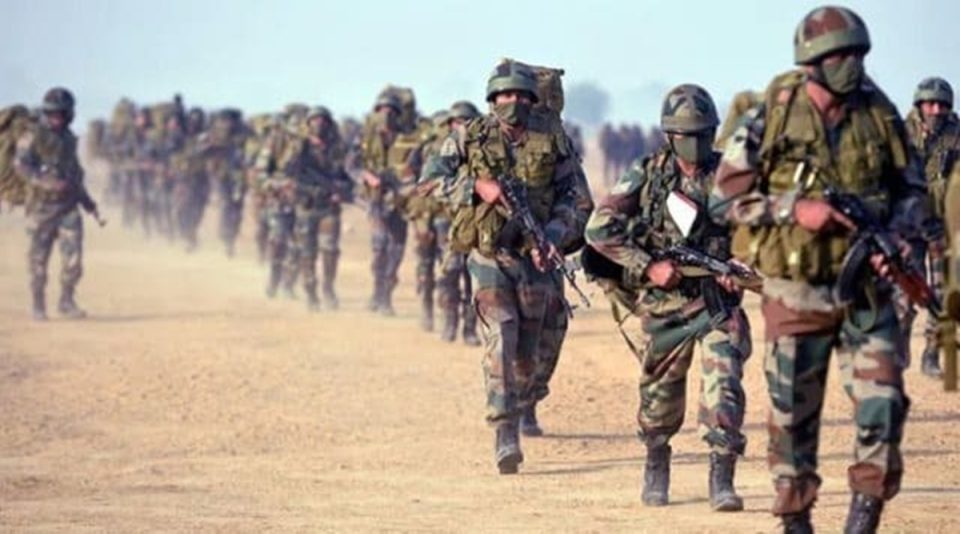
Agniveers promised job quotas; how do ex-servicemen fare now?
Inadequate qualification (and lack of experience henceforth) is one of the reasons for ex-servicemen quotas in different departments remaining unfulfilled

Employment quotas promised to early-discharged Agniveers appear ambitious considering the difficulties faced by ex-servicemen in commencing a “gainful second innings”. They are often considered not skilled enough for civilian works even after serving full-term in defence forces.
The Defence Ministry’s own data show how abysmal is the rate of recruitment in posts reserved in various government organisations for ex-servicemen (ESM). Of the 22,168 such reserved category posts in 32 Central government ministries, only about 1.60 per cent have been filled with ESM, according to the government’s own figures.
Also read: How prized is Army job in each state? Agnipath angst linked to that
The Directorate General Resettlement (DGR), an inter-service organisation under the Defence Ministry, in a report, cited lack of qualification as one of the reasons for the quotas not being filled adequately. The DGR was established in 1968 to facilitate resettlement of ex-servicemen through a “second career.”

Even PSUs, PSBs do not fill posts
The data up to June 2021 compiled by the DGR on the recruitment of ESMs show that even the Central Paramilitary Forces (CPMF), Central public sector units and public sector banks are hardly filling the reserved posts despite having job quotas for ESM.
For the ESMs, 10 per cent reservation is provided in the CPMF for the direct recruitment up to the level of assistant commandant (group A and B posts). The DGR’s data show that only 2.20 per cent of the reserved Group A posts were filled up till June last year. The Railway Protection Force has the highest intake rate of 2.36 per cent in these posts followed by the Border Security Force at 1.75 per cent.
Also read: Modi’s silence on Agnipath is far from the standards he has set
The Central Industrial Security Force (CISF), Indo-Tibetan Border Police and the Assam Rifles did not recruit any ex-servicemen in the Group A posts. The National Security Guard (NSG) did not even bother to submit any status report of ESM recruitment to the DGR.
In Group B category, the CISF filled up 2.79 per cent quotas, the highest among the paramilitary forces. All in all, just 0.87 per cent of the reserved Group B posts are staffed.
In these organisations, 10 and 20 per cent posts are reserved for groups C and D categories, respectively. But the ex-servicemen accounted for only 0.47 per cent of the total C group posts. None “qualified” for the D group jobs.
Quota for disabled, kin of martyrs
The CPSUs and the private sector banks set aside 14.5 per cent C category and 24.5 per cent D category posts for the ex-servicemen. These include 4.5 per cent quota for disabled ESM and dependents of service personnel killed in action. Only 1.15 per cent group C posts and 0. 30 per cent group D posts were allotted to ex-servicemen. These organisations, however, filled up 4.67 per cent of their group B posts with retired defence personnel.

Banks relatively did better in meeting the reservation by providing 9.10 per cent group C and 21.34 per cent group D posts to the ESM, according to the figures compiled by the DGR.
States are no better
Various states too have reserved jobs for ex-servicemen. But when it comes to recruitment, the commitment is hardly met.
Of those recruited for the second career, the majority are from the Air Force and the Navy, according to an association working for the welfare of the ex-servicemen.
“The personnel from the Air Force and the Navy have an edge over Army personnel in starting a second career because they are relatively more qualified,” said Lt Col (Rtd) G Parvatheesam, general secretary of the Tri Services Ex-Servicemen Welfare Association.
Every year, approximately 60,000 service personnel retire. The DGR runs various programmes to help them acquire additional skills required in the competitive civilian job markets. Yet, they find the transition into a second occupation difficult.
Also read: Agnipath: Altering well-oiled system can have serious repercussions
When ex-servicemen, after serving the forces for 15 years, find it difficult to get employment in the civilian set up, ‘Agniveers’ hardly have any chance, say experts.

“The promised job quotas for them (Agniveers) are just a fallacy. Those chucked out Agniveers will not be able to acquire any expertise during their short stay of four years in the services. Now tell me how they can be provided jobs, when much better trained ex-servicemen are not considered good enough?” said Major General (Rtd) Gaganjit Singh, a former deputy chief of Defence Intelligence Agency. He said ex-servicemen mostly get jobs as security guards and drivers.

